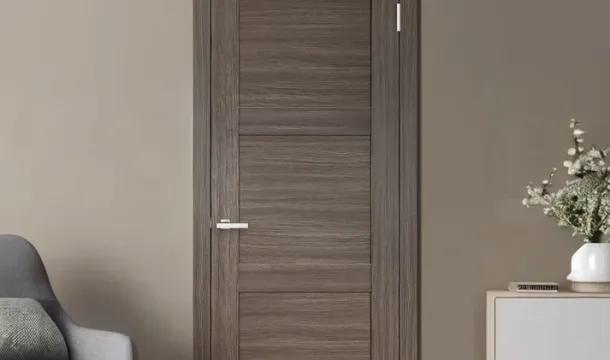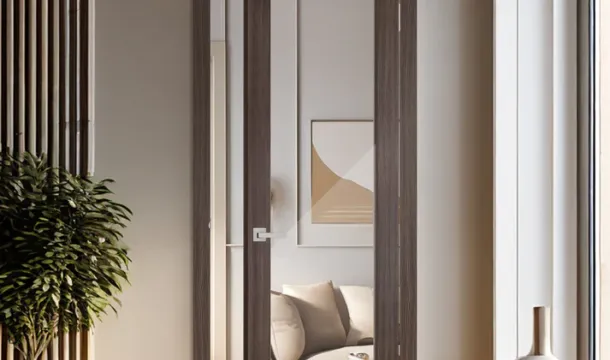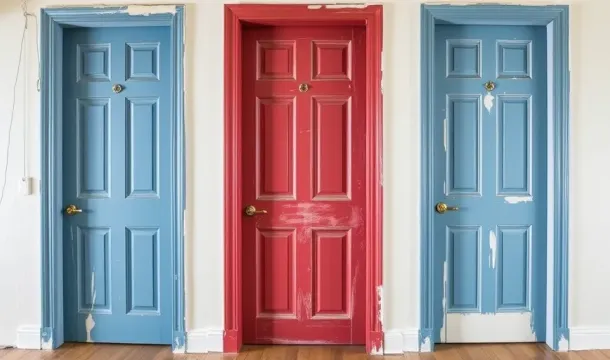Key Factors to Choose Custom Interior Doors for Your Home
Popular Articles
- Choosing the Perfect Interior Doors for Your Canadian Home
- A Complete Guide to Choosing Interior Doors for Canadian Homes
- The Challenges of Painting Interior Doors
- Understanding Interior Doors and Their Role in Your Home
- The Perfect Blend of Reliability and Design: Interior Doors with Italian "Sandwich" Technology
Style sets the tone of any living space, making it vital to align door designs with existing decor. Whether aiming for minimalist lines, rustic charm, or contemporary flair, doors crafted from specific materials like solid wood, engineered composites, or metal influence both look and feel. Each choice impacts durability, maintenance needs, and overall ambiance.
Accurate dimensions ensure seamless integration within door frames and prevent future complications during installation. Custom sizing accommodates unique architectural details or uneven walls often found in older Canadian homes. Prioritizing precise measurements reduces costly adjustments and enhances operational smoothness.
Security remains a priority when selecting internal passageways; robust locking mechanisms combined with sturdy core materials provide peace of mind without compromising aesthetic appeal. The chosen finish, whether matte, glossy, or textured, not only protects surfaces but also complements interior color schemes effectively.
Budget influences material selection and complexity of design. Investing in high-quality components upfront can lower long-term expenses by extending lifespan and reducing repairs. Balancing functional requirements with financial parameters results in a tailored solution that suits both lifestyle and wallet.
Design versatility allows customization beyond traditional panelsincorporating glass inserts, decorative moldings, or innovative hardware transforms standard openings into signature features. Thoughtful integration enhances flow between rooms while preserving individual character within each area.
Material Selection and Durability
Selecting materials with proven resilience significantly enhances longevity and performance. Solid hardwoods such as oak, maple, or walnut offer superior durability and natural resistance to dents and scratches compared to MDF or hollow-core alternatives. For moisture-prone areas, engineered wood or moisture-resistant composites provide stability without warping.
Pay attention to the hardware quality; stainless steel hinges and multipoint locking systems improve security while maintaining smooth operation over years of use. The finish applied should match both aesthetic preferences and functional needspolyurethane coatings deliver strong protection against abrasion and humidity, extending surface life.
Impact of Dimensions and Installation on Longevity
Accurate dimensions aligned with frame specifications prevent undue stress that can compromise structural integrity. Professional installation ensures proper alignment, avoiding gaps that lead to drafts or increased wear on door edges. Incorrectly sized doors often cause premature damage to both the door slab and surrounding trim.
Balancing Budget Without Sacrificing Strength
While premium materials might require higher upfront investment, prioritizing durability reduces replacement frequency, ultimately saving costs. Combining mid-range woods with durable finishes and robust hardware offers a balanced solution for those mindful of expenses but unwilling to compromise on lifespan or security.
Design Matching Room Style
Selecting a door design that harmonizes with the room's aesthetic elevates both visual appeal and functionality. Prioritize dimensions that complement spatial proportionsoversized doors suit grand, open-plan spaces, while slimmer profiles enhance compact rooms without overwhelming them.
The finish must reflect the existing palette and textures: matte paints match minimalist settings, whereas rich wood stains align with traditional or rustic interiors. Hardware choices such as handles and hinges should echo the room's accentsbrushed nickel or black matte for modern lofts, ornate brass for classic decors.
Integrate materials consistent with surrounding elements to maintain coherence; glass panels work well in contemporary layouts to add lightness and transparency, while solid wood ensures privacy and contributes to durability. Consider security requirements alongside designreinforced cores or multi-point locking systems can be embedded discreetly without compromising style.
Budget influences the balance between aesthetics and performance. Investing in tailored finishes and durable components ensures longevity without sacrificing the intended atmosphere. Customizing each aspectfrom grain direction in veneers to bespoke moldingsanchors the door seamlessly within its environment.
Door Size and Installation
Accurate dimensions are fundamental to a flawless installation process. Measure both the height and width of the existing opening, accounting for any irregularities in walls or floors. Standard interior door sizes range from 24 to 36 inches in width and 78 to 84 inches in height, but custom sizing ensures perfect alignment with your space.
Installation complexity varies depending on frame conditions and wall thickness. Ensure hardware compatibilityhinges, locks, and handles must match the door's thickness and style to maintain durability and security. Misaligned or improperly sized doors can compromise both functionality and aesthetic appeal.
Practical Tips for Optimal Fit
- Allow a clearance gap of approximately 1/8 inch around the door edges for smooth operation without drafts.
- Verify floor levelness; uneven floors may require adjustable thresholds or shims during installation.
- Select finishes that complement surrounding trim and materials while considering wear resistance in high-traffic areas.
- Discuss budget limits upfront with installers to balance quality of materials, hardware, and labor costs effectively.
Installation Impact on Performance
The precision of fitting directly influences long-term durability. Poor installation can lead to warping or premature wear, especially when combined with unsuitable finish or materials. Proper sealing enhances energy efficiency and sound control, increasing overall comfort and security within living spaces.
Security and Privacy Features
Select doors with solid core materials like hardwood or composite for enhanced sound insulation and resistance to forced entry within indoor spaces. Incorporating quality hardware such as multi-point locking mechanisms or privacy locks significantly improves security without compromising style.
Consider door thickness and dimensions carefully; thicker panels provide better noise reduction and sturdiness. For rooms requiring extra discretion, opt for flush designs with minimal glass or frosted inserts to maintain privacy while complementing the overall interior design.
Durability plays a role beyond aestheticshardware finishes resistant to wear ensure long-lasting performance of locking components. Proper installation aligned with frame specifications prevents gaps that could undermine both security and acoustic privacy.
Balancing budget constraints, prioritize reinforced hinges and strike plates that support heavier door weights, minimizing vulnerability points. Customizable options allow integration of smart lock systems compatible with existing home automation setups, combining convenience with safety.
Popular Articles
- Choosing the Perfect Interior Doors for Your Canadian Home
- A Complete Guide to Choosing Interior Doors for Canadian Homes
- The Challenges of Painting Interior Doors
- Understanding Interior Doors and Their Role in Your Home
- The Perfect Blend of Reliability and Design: Interior Doors with Italian "Sandwich" Technology

Choosing the Perfect Interior Doors for Your Canadian Home

A Complete Guide to Choosing Interior Doors for Canadian Homes
